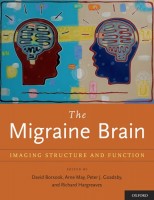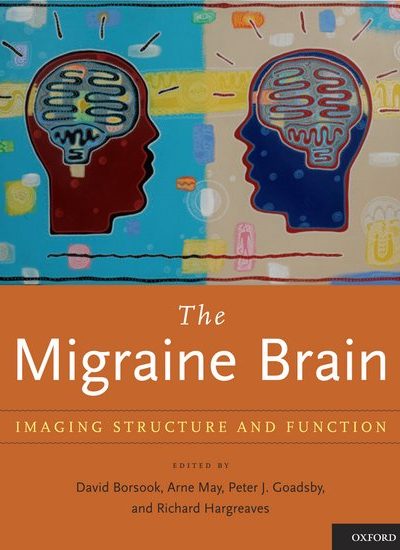 Editors: David Borsook, MD; Arne May, MD; Peter J. Goadsby, MD; Richard Hargreaves, PhD
Editors: David Borsook, MD; Arne May, MD; Peter J. Goadsby, MD; Richard Hargreaves, PhD
Publisher: Oxford University Press – 384 pages
Book Review by: Nano Khilnani
Imaging of the human brain and the rest of the nervous system has given the best results, compared to other examination methods, in diagnosing disorders and diseases, as Dr, Michael A. Moskowitz, a professor of neurology at Harvard Medical School, points out in his Foreword to this book.
But imaging techniques and methodologies have not yet reached their potential, the editors state .They are hopeful that “higher field strength magnets and more sophisticated computational and other analytical approaches (will) improve the power, efficiency, and resolution of functional imaging.” They point out that imaging has been useful in numerous ways, including revealing:
- The dynamics of brain connectivity during rest and after noxious stimulation
- The correlates of psychophysical or behavioral stimulation and its central modulation
- The structural and functional consequences of chronic pain
- Cerebral blood flow regulation and the coupling that exists between flow, metabolism, and neurophysiological activity in disorders of neurovascular regulation
Neuroimaging is now being used to discover the nature and origins of migraine headaches, which the editors assert are the most complex problems in present-day neurology. The irony is that migraines are among the most common of headaches. Affecting females more than males, migraine headaches are sometimes accompanied by nausea, vomiting, and sensitivity to light, sound and smell.
Migraines were originally thought to be a disorder primarily of blood vessels, but recent data implicate
- the brain
- its trigeminovascular system
- neurovascular dysfunction
- the role of genetics and hormones
- other susceptible factors
This book focuses on the study of migraine headaches and its many aspects. Sixty one specialists from the United States and Australia, Belgium, Brazil, Denmark, France, Germany, Italy, the Netherlands, and Switzerland contributed content for 33 chapters of this volume, which is divided into five Parts, namely:
- Migraine: History
- Neurobiology of the Migraine Brain
- Clinical Perspective
- Imaging Migraine
- Conclusions
This book is a major contribution to the study of the migraine headache. Through various imaging techniques such as MR, fMRI, DTI, VBM, PET, fMRI, and MEG, the reader is able to study the structure, function and chemical makeup of the human brain with a migraine headache, compared to other types of headache.
It is particularly useful because it has sections that focus on particular aspects of migraine, for example the migraine aura: those symptoms that cause visual sensitivity (blinding white light), sensory difficulty (loud noises, painful touch, and hot/cold spells), slurred language, and motor dysfunction.
The editors and the authors of the content in this important volume have provided a service of incalculable value with the information they provide in this milestone work on the migraine brain. They are to be heartily congratulated for their work in researching and writing for this work, and generously sharing their knowledge, experience, and insight.
Editors:
David Borsook, MD, PhD is Director of the Pain and Analgesic Imaging Neuroscience (PAIN) Group at McLean Hospital, Massachusetts General Hospital, and Children’s Hospital in Belmont, Massachusetts.
Arne May, MD, PhD is with Institut fur Systemische Neurowissenschafen, Zentrum fur Experimentelle Medizin, Universitatskilinikum Hamburg-Eppendorf in Hamburg, Germany.
Peter J. Goadsby, MD, PhD is Director of the UCSF Headache Center in the Department of Neurology at the University of California at San Francisco in San Francisco, California.
Richard Hargreaves, PhD is Vice President of Worldwide Discovery Head in Neuroscience at Merck Research Laboratories in West Point, Pennsylvania and Kenilworth, New Jersey.







